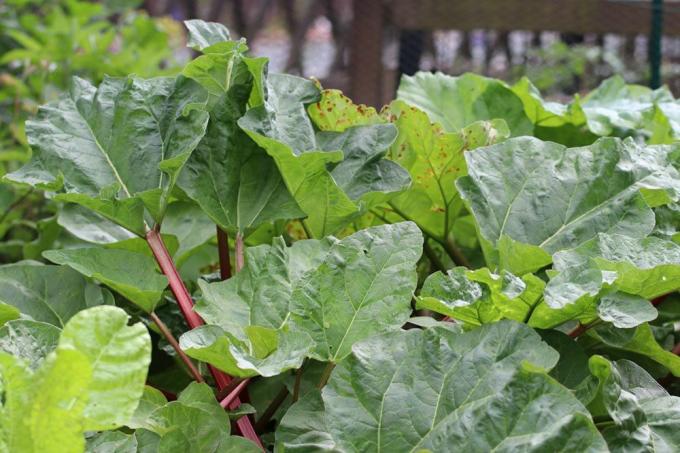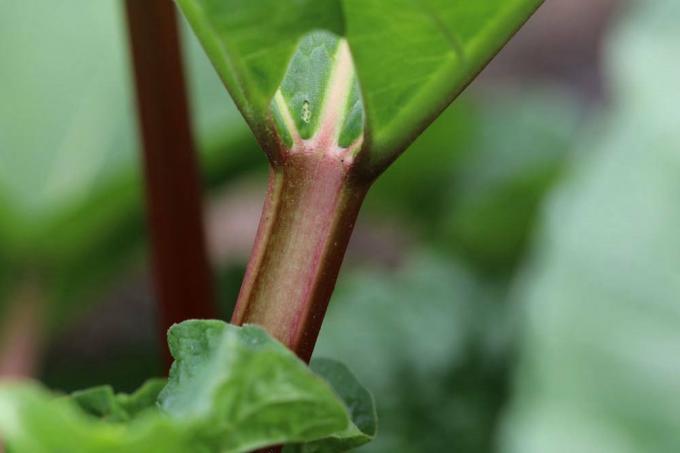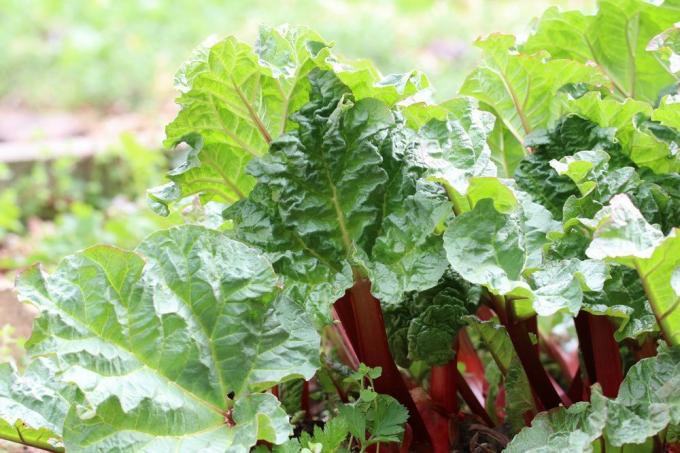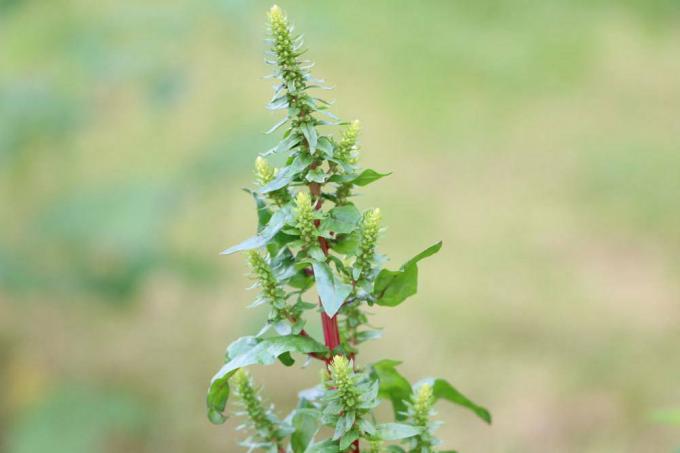
table of contents
- Is rhubarb a fruit or a vegetable?
- Difference between fruits and vegetables
- Reasons for confusion
- What is leaf stem vegetable?
In spring you will find pleasures on the plate again that seemed half forgotten over the winter. Asparagus, radishes and spinach are the long-running favorites here, but May would be nothing without a sour compote rhubarb. The red-green knotweed is often boiled down or made into syrup and offered as a dessert. The question now arises as to whether rhubarb is a fruit, as is so often assumed, or is it a vegetable?
Is rhubarb a fruit or a vegetable?
Rhubarb is a useful plant from the genus Rheum of the same name and from the knotweed family. Rhubarb grows as a perennial that sprouts from thickened roots and forms large leaves and flowers in addition to strong stems, also called rhubarb stalks here.
The answer in advance: rhubarb is a Leaf stalk vegetables. Learn more …
Many people do not know that the plant even has a fruit cluster, since only the stems are used by humans. However, this can often only be seen in the natural range in the Himalaya Mountains. The following culinary products are traditionally made from the stems of the plant, which are peeled and cooked beforehand:
- jam
- compote
- Pastries, especially cakes
- syrup
- juice
- Ice cream
- less often in bitter dishes
 Due to the high content of Oxalic acid, also called clover acid, Rheum rhabarbarum is cooked and processed before consumption. After the plant has been cooked, it can be enjoyed without any problems, even by people who are sensitive to the clover acid, as this binds the body's own calcium and leads to kidney stones in a weakened body and an unbalanced diet can.
Due to the high content of Oxalic acid, also called clover acid, Rheum rhabarbarum is cooked and processed before consumption. After the plant has been cooked, it can be enjoyed without any problems, even by people who are sensitive to the clover acid, as this binds the body's own calcium and leads to kidney stones in a weakened body and an unbalanced diet can.
Rhubarb is eaten by April to 24th June, St. John's Day, because from this time the roots go into hibernation and the production of clover acid is increased. Four cultivars are mainly sold in Germany:
- Holstein blood
- Holstein noble blood
- Goliath
- Raspberry Rhubarb (Frambozen Rood)
The individual varieties have different stem and leaf colors, aromas and oxalic acid content. However, they have one thing in common: they are all a vegetable. Yes, the rhubarb is a so-called leaf vegetable, which is also classified under the group of stem vegetables, since it is not the leaves but only the stems of the perennial that are used. The resulting fruit is not used, which would be a prerequisite for the designation as fruit at least fruit vegetables. However, from a botanical point of view, Rheum rhabarbarum does not belong to the group of fruits and therefore not to fruit either.
Difference between fruits and vegetables
The biggest reason for mistaking the knotweed family for fruit is the fact that in Germany and other western countries only the stems are used for sweets and desserts. This means that the plant belongs to the collective term of the types of fruit, just like melons, although they are not. Vegetables are the edible parts of the plant that are not the fruit, so:
- root
- Stems
- leaves
- Seeds
The distinction is not difficult with rhubarb, because here only the stems are used and the fruit is not used at all. The only thing that pushes the plant a little more to the side of the fruit is its growth habit. Perennial plants like all fruit trees, for example, are one of them and Rheum rhabarbarum is a perennial shrub that sprouts anew every year. That would speak in favor of a fruit, but the bark or branches of an apple tree are not consumed. In the home of the knotweed family, only the roots are valuable for Chinese medicine, which speaks for the classification as a vegetable.
Note: As in the 18th When the first rhubarb plants were used as food in England in the 19th century, only the stems were used as food. Like celery, these were served with meat and other dishes and not served with sugar, which shows that rhubarb has always been a vegetable.

Reasons for confusion
Despite the clear demarcation from other types of fruit, except for the growth of course, the reason for the division into the collective term of the fruit is the use for desserts. In Germany the usage of the language is structured in such a way that all "sweet" parts of the plant are divided into this group, even if it is not biologically a type of fruit. This makes the classification of many plant varieties extremely difficult, as can be seen with the following other plants:
- Tomatoes: fruit vegetables, not vegetables
- Strawberries: not berries, but nuts
- Melons: not a fruit plant, but a fruit vegetable
- Cashew: not a nut, but a stone fruit, i.e. a core
These are just a few examples of how the actual name of the food is twisted, which is deeply anchored in the language. This can also be observed in other cultures, for example in the western, English-speaking world. Rhubarb has even been listed as a fruit by law in the USA since 1947 and must be marketed under this name. It should be noted here that the English word for “fruit” has the same meaning as fruit in Germany. That means, despite the use of the stalks, it is sold as a fruit, which of course is not true. Rhubarb clearly belongs to the vegetable, more precisely the leaf stalk vegetable.
What is leaf stem vegetable?
Leaf stalk vegetables are a special term for leaf and stem vegetables that cannot be divided directly into either of the two categories. Another term would be “stem vegetables”, which does not come from botany, but is anchored in the vocabulary again. The following plants are listed under the stem vegetables:
- rhubarb
- Swiss chard
- asparagus
- Celeriac

You can see that all of these plants have leaves that are not consumed by humans. In contrast, the stalks are used, but they bear the leaves, flowers and possible fruits, but which are inedible for humans or are only consumed as a by-product. This means that Rheum rhabarbarum is a vegetable, more precisely a leaf vegetable, which colloquially belongs to the stem or leaf stalk vegetables. The only thing that rhubarb has in common with fruit is the fact that it is used for sweet dishes in western cultures. In the eastern cultural area, however, it is a classic vegetable.
Note: Will the Rhubarb blossom cooked, this can also be consumed. Flowers, on the other hand, are not integrated into either of the two collective groups if they do not form a fruit, which speaks even more strongly in favor of the classification as a vegetable plant despite its use.

